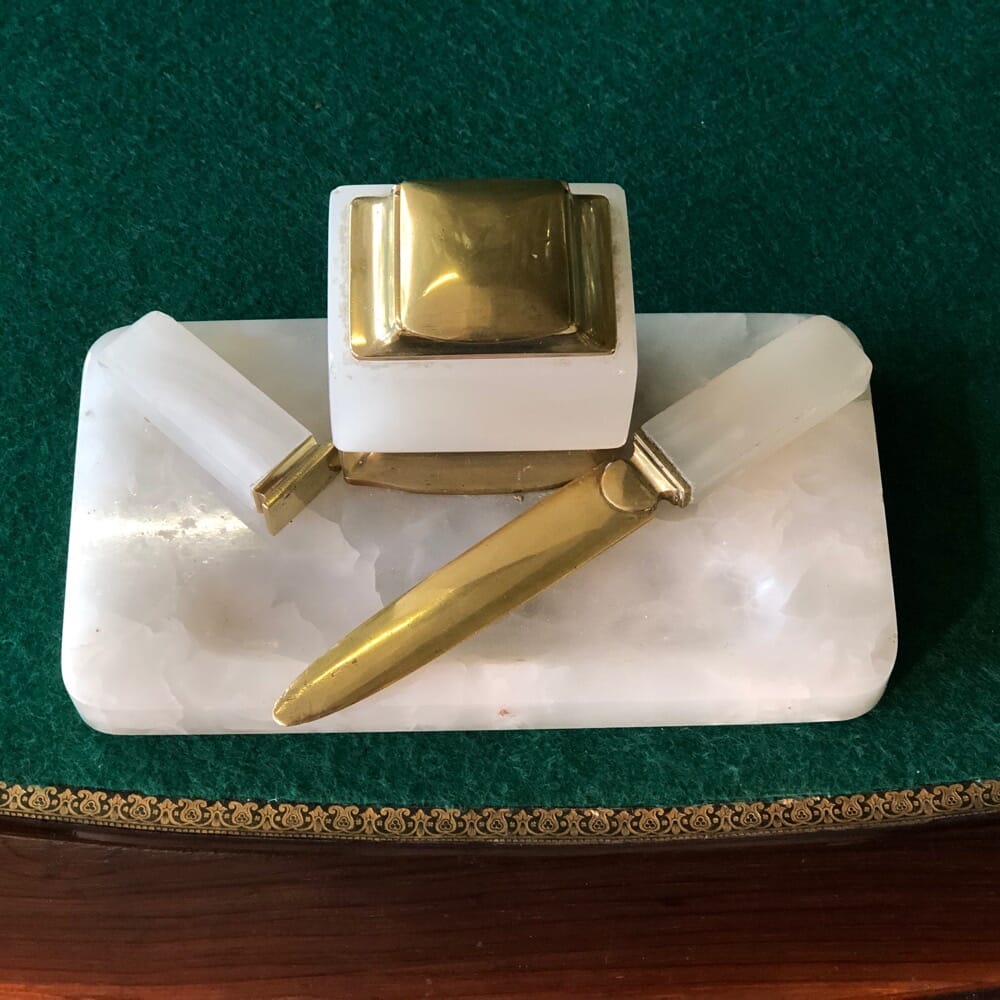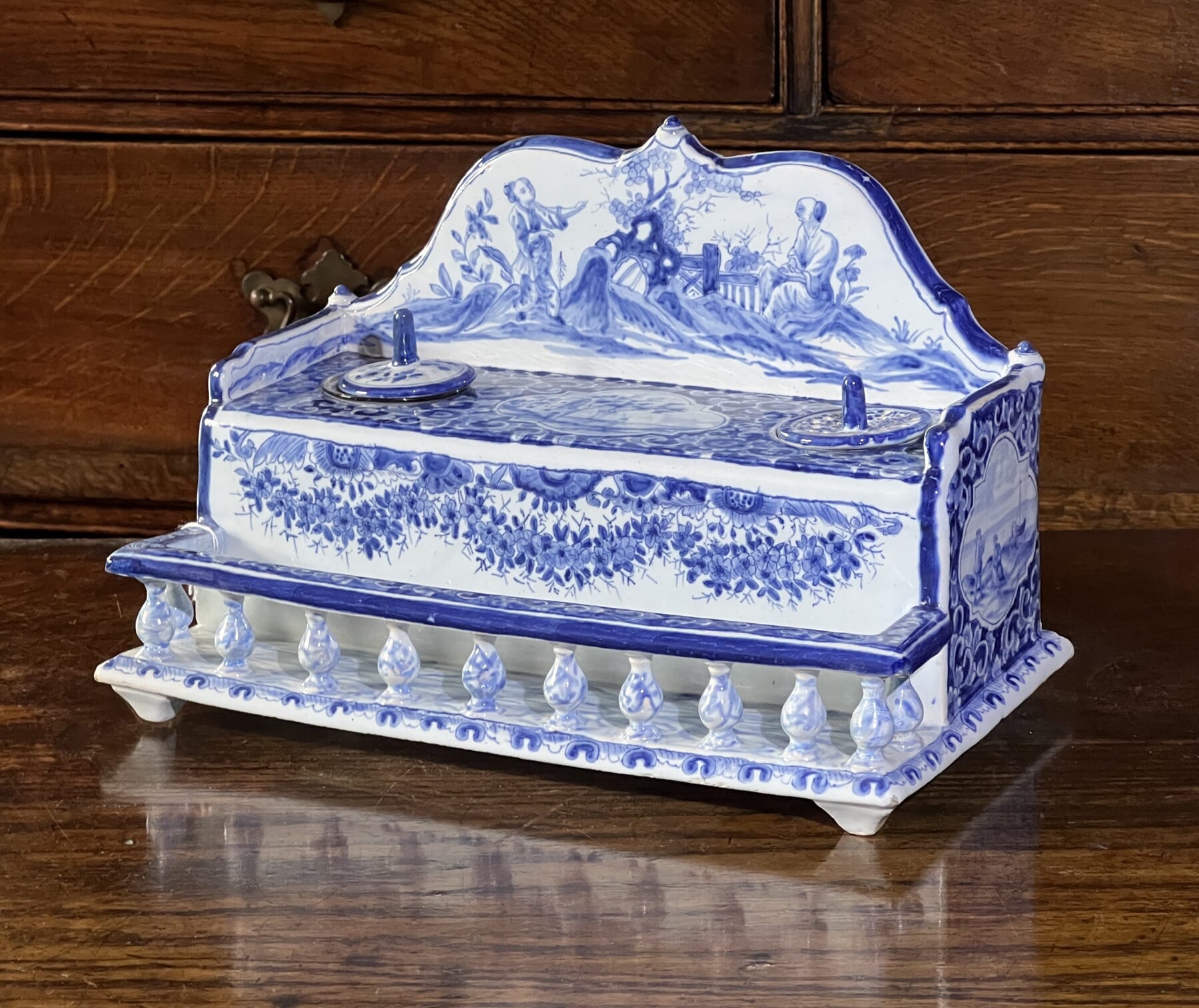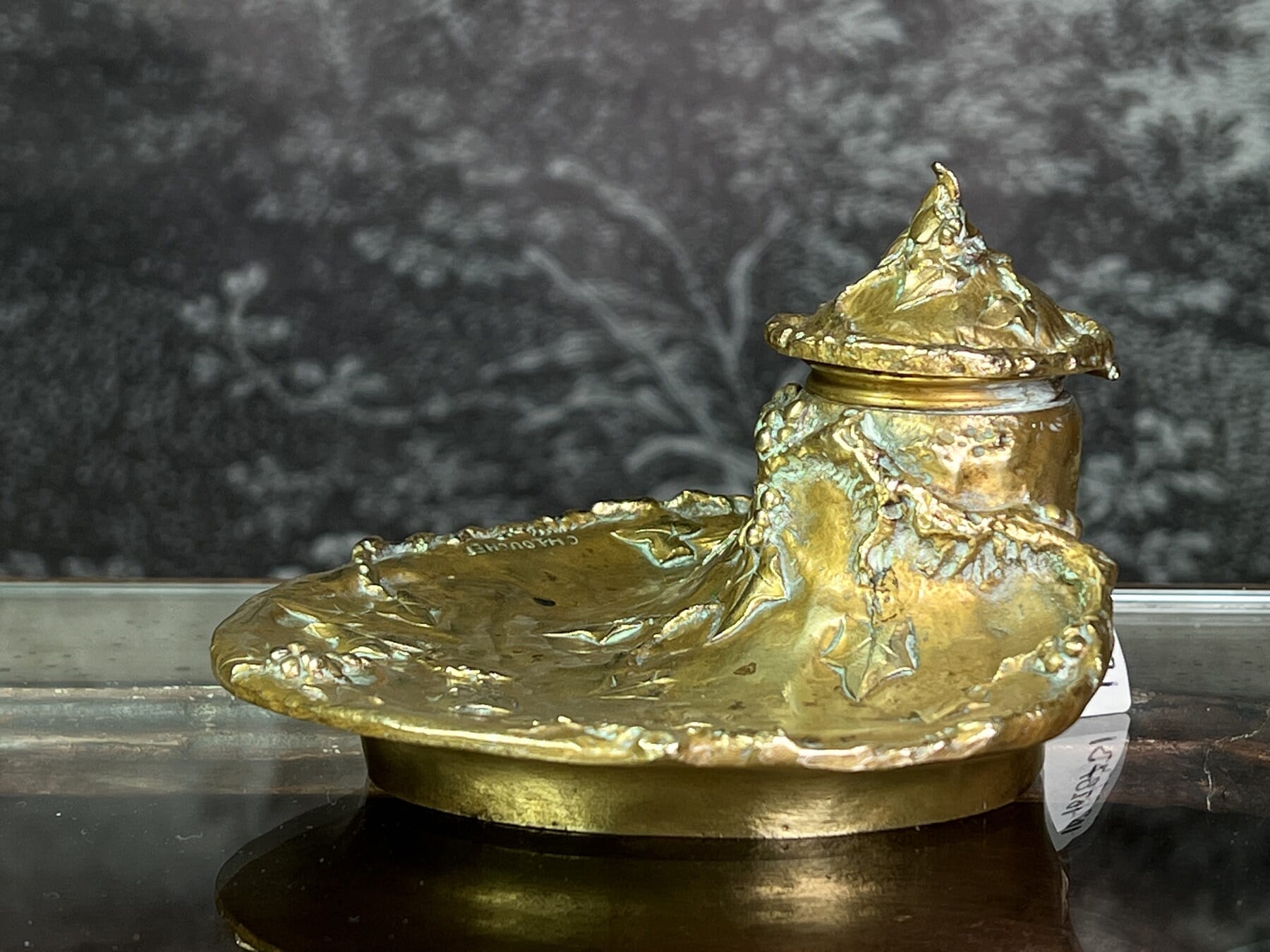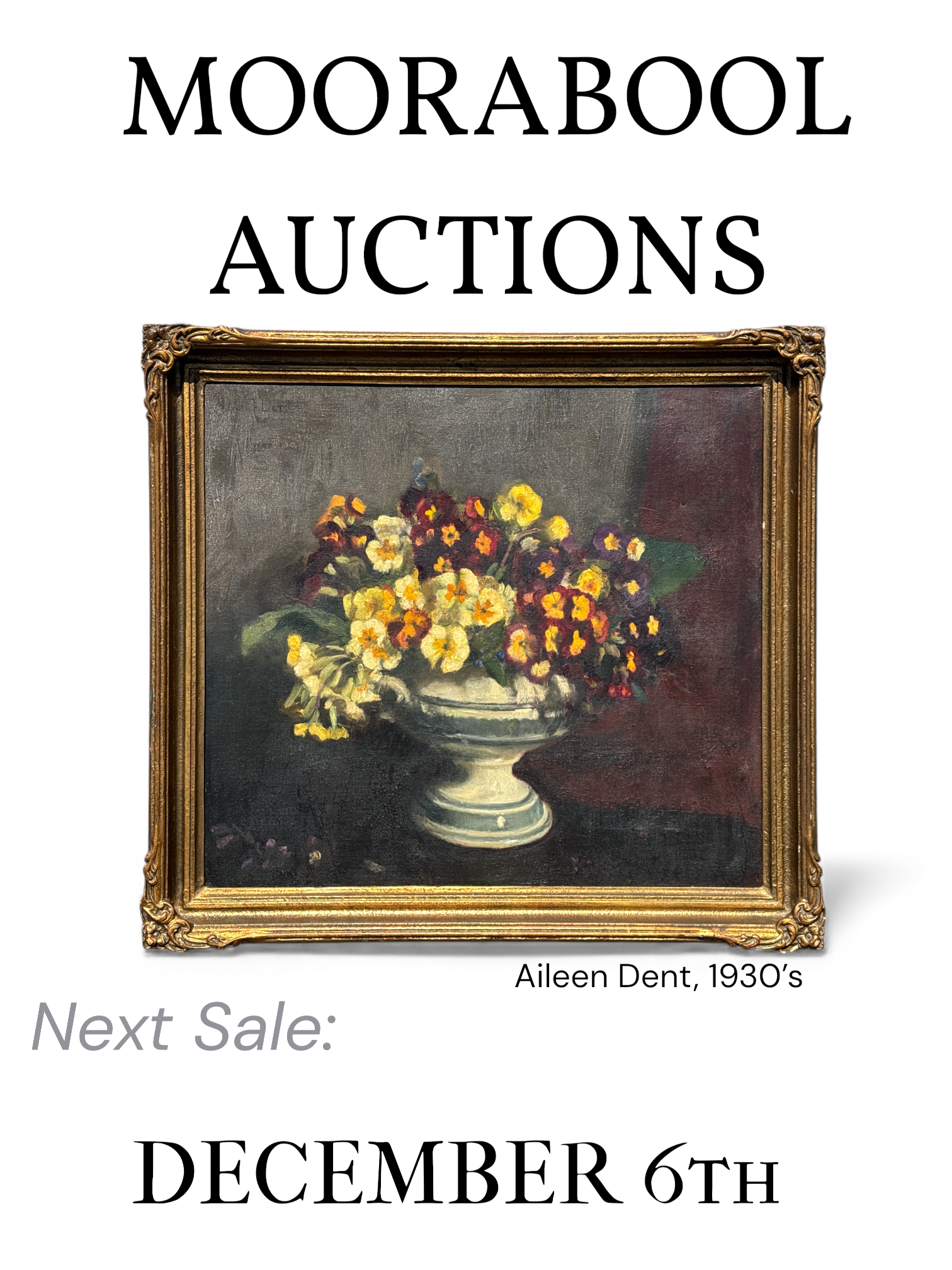Steel deskset with fine Baroque engraving, boxed, Mosley of London c.1860
Sold
Fine quality engraved & gilt steel desk set in fitted box, probably retailed by Richard Mosley, London, and made in Sheffield, consisting of scimitar-shaped letter opener, seal handle, and pen, along with two nib compartments, one containing curious fragmentary composite plaques with scenes of Paris landmarks; the whole finely etched with Baroque scrollwork framing depictions of Turks to the blade, with various gilt copper mounts.
Circa 1860
Richard Mosley was the son of Richard Mosley, silversmith in London, and became a supplier of superior writing implements by the mid-19th century. In his 1852 London Directory advert he states he supplies superior steel nibs that do not wear, as seen on the pen in this set. He also states he stocks a “A LARGE STOCK ON HAND OF EVERY DESCRIPTION OF INK STANDS, CUTLERY, LEATHER GOODS, IVORY AND PEARL GOODS, AND VARIOUS OTHER ARTICLES SUITABLE FOR STATIONER & JEWELLERS” . Clearly, these were not all manufactured by him, but sourced from various workshops and retailed by him – once he had included one of his superior non-wearing nibs.
His secret to a superior product was to embrace the latest technology: stainless steel. This was the ‘holy grail’ of industry in the 19th century, to have a durable steel product that would resist rust. By embracing a new technology, he was able to produce a novelty ‘tech gadget’ of his time.
The method of decoration is acid-etching steel. This technique was exhibited at the 1851 Great Exhibition by Thomas Skinner of Sheffield. He had obtained a patent the same year for an efficient way of producing complex etched designs in steel, which could then be enhanced with gilt, such as our example here. Basically, an engraving of the required design was printed onto tissue paper (such as potters use for transfer printing) – in ink & linseed oil, which could then be pressed onto the steel surface; one this had hardened, water applied to the paper allowed it to be peeled off. A powdered ‘resin’ is then dusted over, and it binds with the sticky linseed oil/ink. When hot water is applied, this solidifies in the same places into a hard crust, resistant to acid. This is then ‘bitten’ – the very descriptive term used by engravers for the action of acid onto metal! Once cleaned off, the acided depressions can be gilded, and a low temperature firing in a kiln ensures a sting bond for the gold.
The Mosley firm exhibited pens in the 1851 Great Exhibition, but did not win a medal. Curiously, they did not enter their pens into the ‘Iron & General Implements / writing implements’ category (Class 22), but rather in the ‘precious metals’ category (Class 23, exhibitor 107) – such was their regard for the quality of their products. This set is certainly ‘exhibition-worthy’, but the question of wether it was a Mosley product or if he just added one of his tips to a fine quality Sheffield product made using Skinner’s patent remains debatable.
RICHARD MOSLEY AND CO.,
8, HATTON GARDEN, LONDON,
MANUPACTURERS (OF THE BEST QUALITY) OF
GOLD AND SILVER PENCIL CASES, PEN HOLDERS, GOLD PENS, &c.
RICHARD MOSLEY AND CO.’S GOLD PENS
Still mointain their character as the very best that have yet been introduced. Their lasting qualities
are admirable. The writer has merely to suit his hand, and he is for many years supplied with a Pen
which never alters. They have all the pliancey and softnoss of the Quill. They never cut the paper, and
the ink flows freely and pleasantly. After hours of use the hand will not tire as with the ordinary pen,
and the writing remains the same, from the impossibility of the point wearing.
A LARGE STOCK ON HAND OF EVERY DESCRIPTION OF
INK STANDS, CUTLERY, LEATHER GOODS, IVORY AND PEARL GOODS,
AND VARIOUS OTHER ARTICLES SUITABLE FOR
STATIONER & JEWELLERS, FANCY WAREHOUSES &c.
| Condition | |
|---|---|
| Size | |
| References |
Sold - let us find you another










